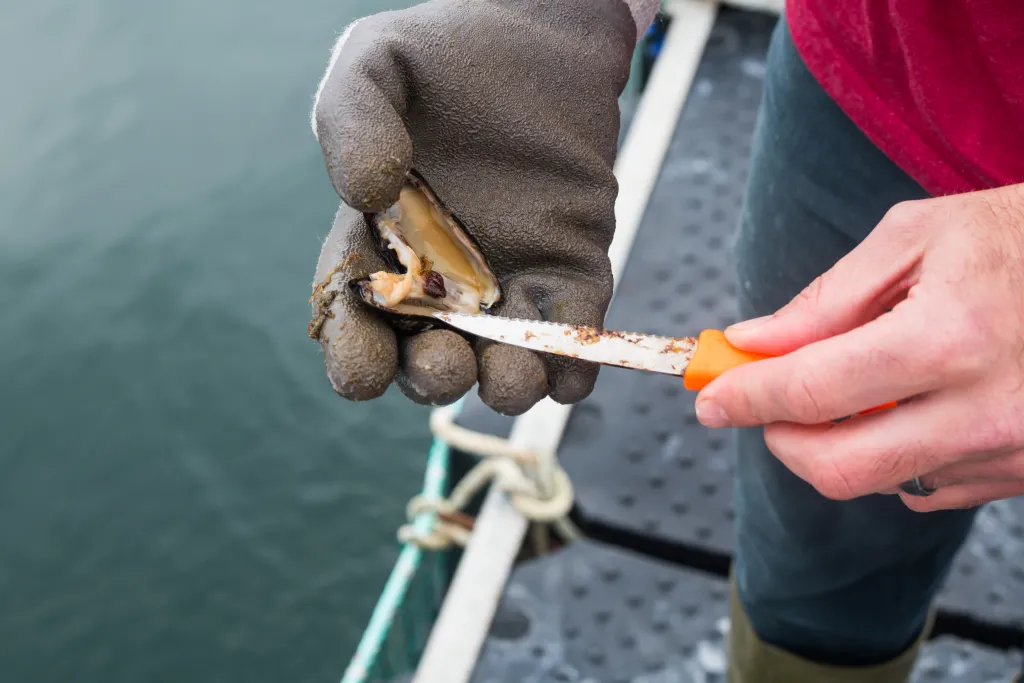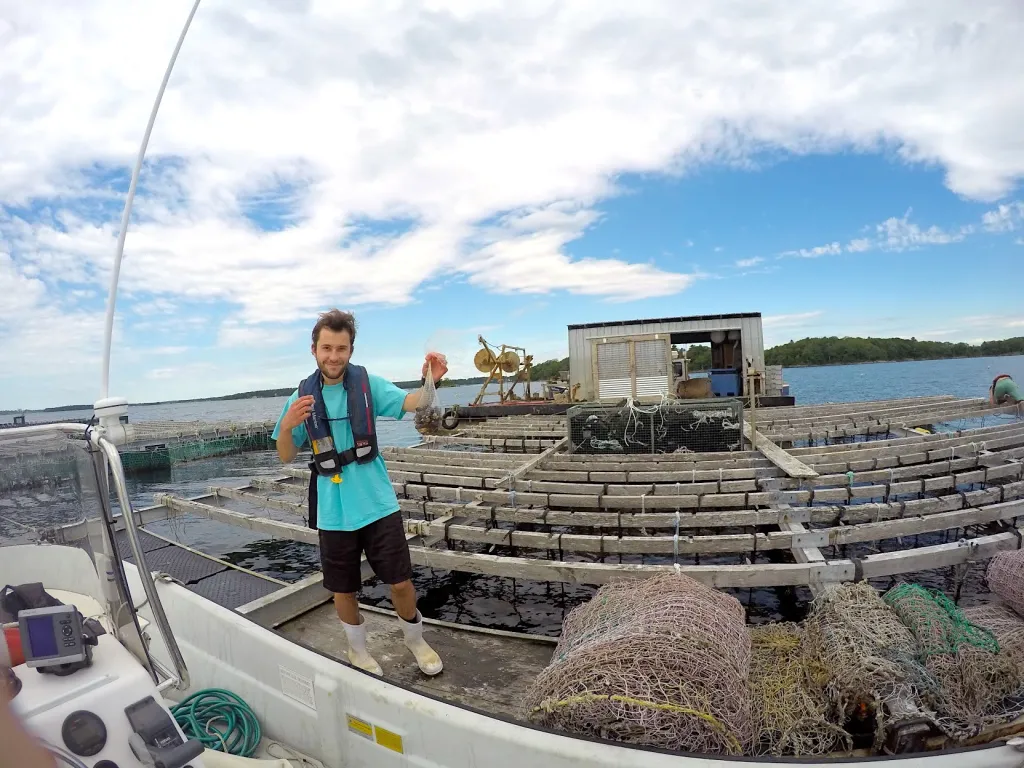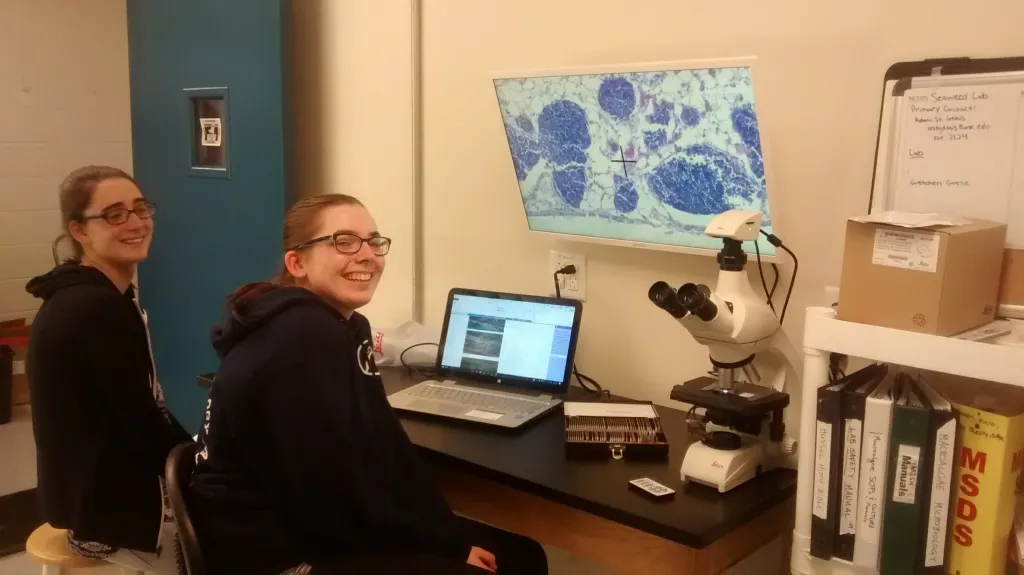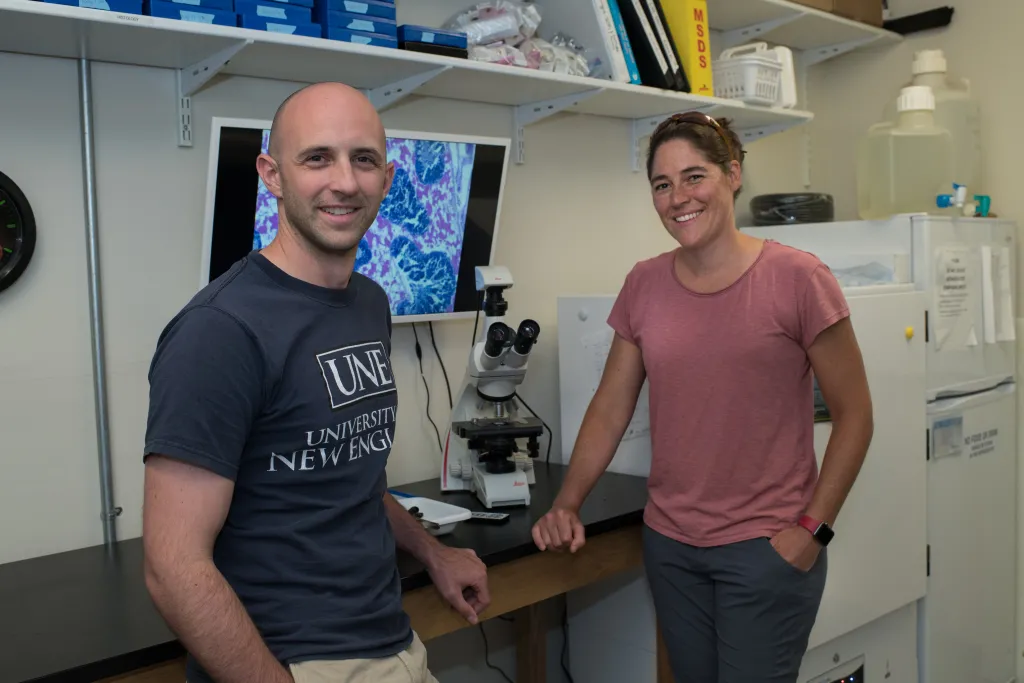Multi-student study assesses health of mussels in Casco Bay
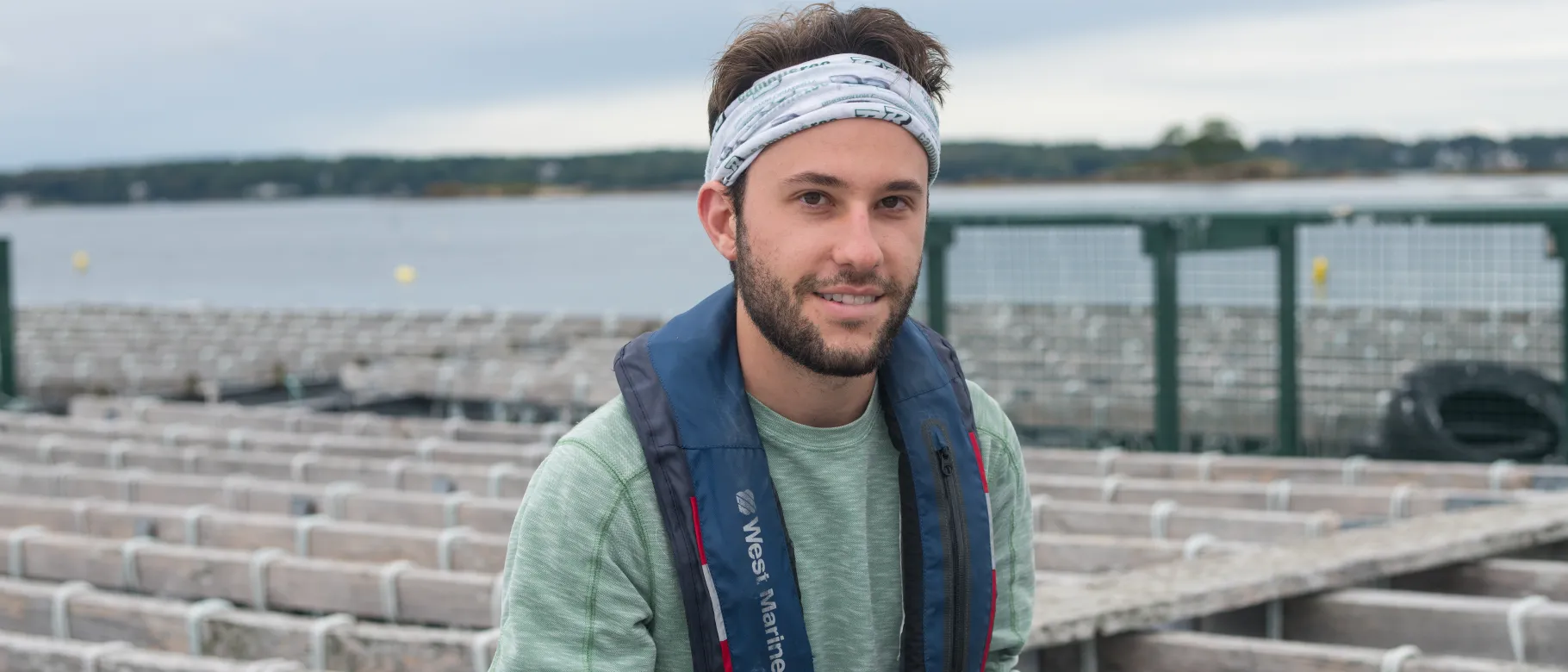
A team of University of New England researchers — including alumni, undergraduate students, and faculty — have contributed to a new research paper published in the Journal of Shellfish Research assessing the health of the species Mytilus edulis, or the blue mussel, in response to physiological or environmental stressors.
The paper, “A Histopathological–Biochemical Health Assessment of Blue Mussel Mytilus edulis,” features lead author Connor Jones, M.S. ’19 (Marine Sciences), graduate student Aubrey Jane, B.S. ’20 (M.S. Marine Sciences, ’22), and recent graduate Elena Shippey, B.S. ’21 (Marine Sciences). The paper builds off of work done by alumni Katie Parker, B.S. ’18 (Marine Sciences) and Michele Condon, B.S. ’19 (Marine Sciences and Environmental Science), who are also listed as authors.
Faculty co-authors include Carrie J. Byron, Ph.D., associate professor in the School of Marine and Environmental Programs within the College of Arts and Sciences; Barry Costa-Pierce, Ph.D., Henry L. & Grace Doherty Professor of Ocean Food Systems; and Adam T. St. Gelais, M.S., assistant teaching professor in the School of Marine and Environmental Programs. Roxanna Smolowitz, D.V.M., assistant professor of biology at Roger Williams University, assisted with the research.
The group’s study analyzed the histology and lipid fatty acid composition to assess the gametogenesis (development of reproductive cells), energy investment, and pathology of farmed mussels collected twice monthly for three years in Maine’s Casco Bay. The study found there is possible interannual variability of energy investment in reproduction and that low levels of common pathogens, parasites, and cellular abnormalities were found within the sample.
The survey did, however, reveal high levels of oocyte atresia (the breakdown of ovarian follicles), which according to the researchers is a probable indicator of physiological or environmental stress from unfavorable spawning conditions, including human-induced changes like climate change and ocean warming.
In addition, the presence of a potentially damaging digenetic trematode, Proctoeces maculate, was documented using histology, marking the northernmost detection of the species in the Northwest Atlantic and a likely result of climate-driven range expansion.
“These trends may signal a challenging future for blue mussels in the Gulf of Maine,” the researchers wrote. “Forward-looking farm mitigation practices informed by these results should be developed to ensure future sustainability of this industry.”
The research was funded by grants and donations from the UNE College of Arts and Sciences, UNE School of Marine and Environmental Programs, UNE Office of Research and Scholarship, U.S. Department of Agriculture Northeast Sustainable Agriculture and Education (NSARE) award #ONE17-306, National Science Foundation Maine EPSCoR SEANET award #IIA-1355457, and Bristol Seafoods.
The funding was unique, St. Gelais said, as it was augmented via industry support from a Bristol Seafoods donation to UNE’s Marine Sciences program to support undergraduate research.
“It’s always nice to see the public and private sectors working together,” St. Gelais said.
